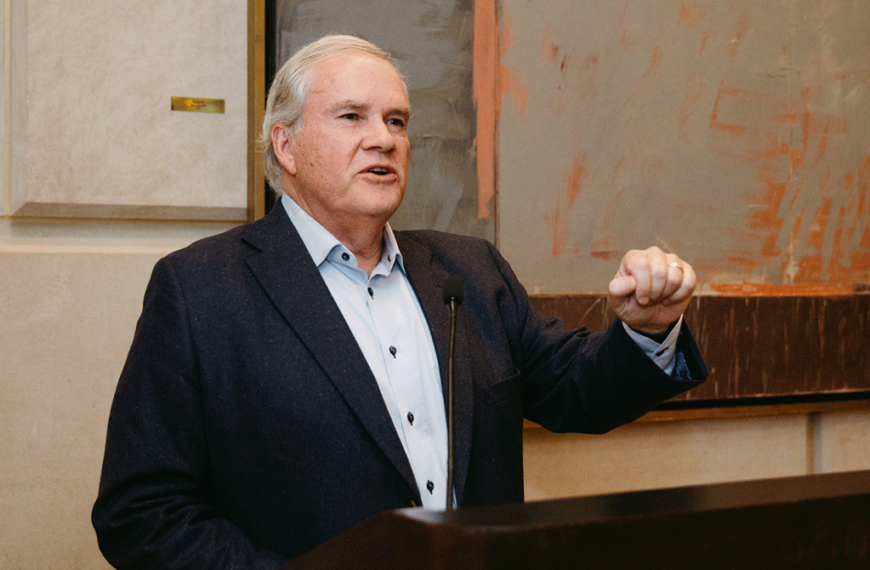For a new U.S. president, 100 days isn’t a massive amount of time – it’s less than 7% of a four-year term. It’s also a convenient, round number – some might say an arbitrary one – that carries no official, stone-etched significance when it comes to evaluating the executive or legislative branches of the government.
Yet, 100 days is a long-standing benchmark by which presidents typically set an agenda and are judged for what they accomplish in that time frame. If the earliest days of President Donald Trump’s second administration are any indication, the first 100 days of “Trump 2.0” are shaping up be a highly consequential window for hospitals and health care in Texas and across the nation.
The Texas Hospital Association is closely watching a flurry of activity from both the new, Republican-controlled Congress and the White House, and is working with the Texas congressional delegation to advance policy that will help THA’s member hospitals continue to promote health and save lives. Here’s a look at what THA is watching as the first 100 days of the new administration unfold.
New Congress, Narrow Margins
The party breakdown in each chamber of Congress, particularly in the House of Representatives, leaves Republicans with an extremely narrow majority in which to pass most policy initiatives. For now, House Speaker Mike Johnson (R-La.) presides over a 218-215 Republican advantage, meaning he can afford just one defection in order to pass a bill along party lines. However, the GOP is expected to regain two now-vacant seats after an April 1 general election in Florida to replace members who resigned to take jobs in the Trump administration: Rep. Michael Waltz, currently nominated for national security adviser, and Rep. Matt Gaetz, who was nominated for attorney general but later withdrew from consideration. Speaker Johnson now has more job security than he or his predecessor, ousted former Speaker Kevin McCarthy, previously held: Under new House rules, at least nine members must make a “motion to vacate” in order to force a vote to remove the speaker, instead of the previous threshold of just one member.
Over in the Senate, Republicans now hold a 53-47 advantage, including two independents who caucus with Democrats. That’s important not just for legislative maneuvering, but also because the Senate unilaterally decides whether to confirm key Trump nominees such as Robert F. Kennedy, Jr., nominated for secretary of the Department of Health and Human Services, and Mehmet Oz, the president’s pick to run the Centers for Medicare & Medicaid Services.
Immediate Hospital Needs: Medicaid DSH and Key Programs
In the short term, THA is hoping this year’s reboot in Washington will allow hospitals to attack the net and score key health care policy goals – while also persuading Congress that “kick the can” isn’t a game you can play forever.
The previous Congress played that game yet again in passing a stopgap government funding package that runs through March 14. Notably for THA members, the bill postponed the beginning of three fiscal years’ worth of Medicaid Disproportionate Share Hospital (DSH) cuts until April 1, once again staving off debilitating reductions to safety-net hospitals that would cost Texas facilities more than $2.3 billion over fiscal years (FY) 2025-27.
For these hospitals, any postponement is preferable to the cuts summarily kicking in. But the temporary solution left THA and other hospital advocates disappointed after a year in which they first won a full repeal of planned cuts for FY 2024, and lawmakers then appeared poised in December to erase the FY 2025 cuts and further delay the remaining two years of reductions. That FY 2025 repeal was included in a version of the stopgap funding package that died after then-President-elect Trump expressed disapproval of the bill, leading to a reworked continuing resolution that included only a three-month postponement of the DSH cuts.
The current funding bill also postponed the end of several hospital-relevant programs and provisions until April 1: the Medicare-Dependent Hospital and Low-Volume Adjustment programs; the Acute Hospital Care at Home program; and COVID-19-era flexibilities on coverage for telehealth encounters. THA will push for extensions or – if possible – permanency for all these programs. Hospital advocates will also push for a full repeal of the remaining DSH cuts.
Reconciliation: A Path for Health Coverage Cuts
Despite the thin majorities the GOP holds in each chamber, THA federal lobbyist Cameron Krier Massey, J.D., MPH, notes Republicans are working to pass many policy priorities through a budget maneuver known as reconciliation. Within that package, House GOP leaders are pushing for trillions in cuts to mandatory spending, which is likely to include reductions to Medicaid and Medicare.
Reconciliation is a process in which items pertaining to budgetary spending can be passed through a simple majority in the Senate, eliminating the usual need to obtain 60 votes in that chamber to overcome a potential filibuster. House GOP leaders said they were looking to make $2.5 trillion in cuts to mandatory spending in exchange for a $1.5 trillion increase to the already reached debt ceiling. The same legislation is also expected to advance major Republican priorities on border security, taxes and energy.
Block Grant and Per Capita Cap Talk, Resurrected
Assuming a reconciliation bill comes together, Medicaid’s place in the package is likely to include renewed discussions around funding it with block grants or per capita caps – a priority for Republicans in the early days of the first Trump administration in 2017 that never came to pass.
Champions of such capped Medicaid funding systems tout the flexibility it gives state legislatures to distribute the money and determine eligibility for the program. THA, however, strongly opposes a block grant or per capita cap approach to Medicaid. In a joint letter with the Texas Medical Association to the U.S. House back in March 2017, THA warned that limiting Medicaid funding using per capita caps “has the potential to force states to make untenable policy choices about covered benefits and/or populations with the unintended consequences of increasing the uncompensated care burden for health care providers.” In a recent meeting with staff for the Texas congressional delegation, THA stressed that capping federal funds actually would punish Texas’ lean, efficient system while rewarding states that spend more extravagantly on Medicaid.
An attempt to limit tax collections that finance Medicaid state directed payment programs could also be part of the reconciliation proposal as well; THA opposes federal action that hamper hospitals’ ability to draw down needed federal funds for Medicaid.
Site-Neutral Policies Still Finding Traction
The proposed reconciliation bill also could include action on other long-standing key issues for hospitals, including site-neutral payment policies mandating that payments for care are the same regardless of setting. THA continues to stress that the complexity of hospital patients, and the greater regulatory burden hospitals face, necessitate higher reimbursements. But an appetite for implementing site-neutral policies at both on- and off-campus hospital outpatient departments has grown in Washington, necessitating more lawmaker education in this area.
In Progress: Tracking the Executive Orders
Meanwhile, legislation isn’t the only type of vehicle hospitals must watch as they travel on Washington’s fast and twisty 2025 racetrack. Little time elapsed between President Trump’s swearing-in on Jan. 20 and the rapid release of a wide-ranging set of executive orders from the administration, many of which have implications for health care. The initial set of dozens of executive orders signed last week include the withdrawal of the U.S. from the World Health Organization and the rescission of many Biden administration orders, including one that sought to expand the availability of health coverage and several related to COVID-19 response.
One key action is the rescission of DOJ’s longstanding policy of Immigration and Customs Enforcement exempting hospitals from enforcement activities, along with schools and other sensitive locations. It’s unclear how that action affects the pending implementation of Senate Bill 4, passed during a 2023 special session of the Texas Legislature. That measure prohibits state law enforcement from arresting and detaining individuals unlawfully present in Texas while they are patients receiving medical treatment in hospitals. Implementation of SB 4 is currently on hold pending a constitutional challenge in federal court.
THA’s legal, lobby and policy teams are currently assessing the executive orders in preparation to keep THA members abreast of the implications for Texas hospitals.
Related articles from The Scope
Meet THA’s Lobby Team for the 89th Texas Legislative Session
Last week, the 89th Texas Legislature gaveled in – and…
Bollard Mandates for Hospitals Would Be a Barrier to Care
It’s not uncommon for the Texas Legislature to lay an…
Open-Door Policy: THA and the 2025 Texas Legislature
Even as modern politics continues to be synonymous with turbulence…
A Healthier State: THA’s Broad and Ambitious Priorities for the 2025 Texas Legislature
We’re now past the general election, and Texans across the…
After the Election: The Outlook for Texas Hospitals
Last week’s general election brought clarity for the Texas Hospital…
Saving the Savings: Keep the 340B Drug Program Accessible for Our Hospitals and Patients
It’s a tricky thing to set up any program –…






